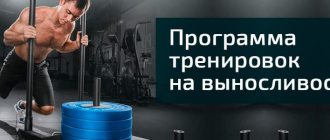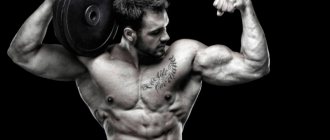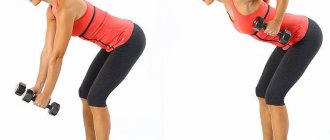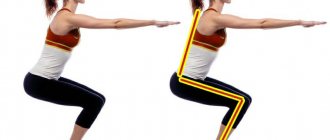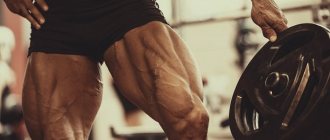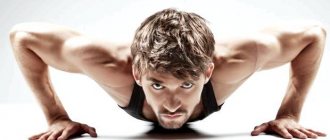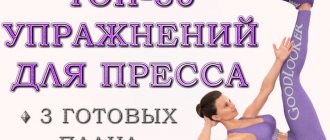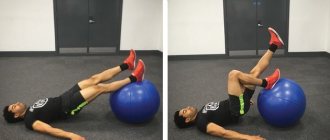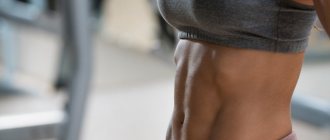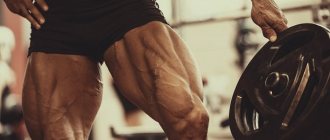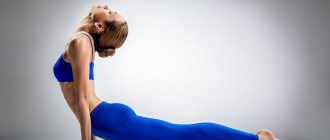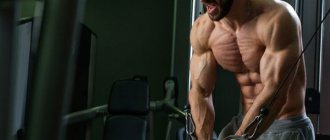STRUCTURE OF THE HUMAN SKELETON
ARMS – EXERCISES FOR ARM FLEXORS – BICEPS – EXERCISES FOR ARM FLEXORS – EXTENSORS – FOREARM – EXERCISES FOR ARM EXTENSIONS – TRICEPS
SHOULDERS – EXERCISES FOR DELTOID MUSCLES
CHEST – EXERCISES FOR CHEST MUSCLES
BACK – EXERCISES FOR THE LATISM MUSCLES OF THE BACK – EXERCISES FOR THE LOWER BACK
LEGS – EXERCISES FOR LEG EXTENSIONS – QUADRICEPS – EXERCISES FOR LEG FLEXORS – BICEPS FEMI – EXERCISES FOR HIP ADDUTORS – EXERCISES FOR CALF MUSCLES – CHINS
BUTTOCKS – EXERCISES FOR THE GUTTEUS MUSCLES
ABDOMINAL – EXERCISES FOR ABDOMINAL MUSCLES – PRESS
HANDS
ANATOMY OF HANDS
EXERCISES FOR ARM FLEXORS – BICEPS
01. ALTERNATING ARM CURLES WITH DUMBBELLS 02. CONCENTRATED ONE-ARM CURL WITH A DUMBBELL 03. HAMMER GRIP ARM CURL WITH DUMBBELLS 04. ONE-ARM CURL WITH LOWER BLOCK HANDLE 05. ARM CURL WITH A HAMMER GRIP WITH THE HANDLES OF THE UPPER BLOCKS 06. BENDING THE ARMS WITH THE BAR BELL 07 BARREL CURL 08. LARRY SCOTT ARM CURL 08. LARRY SCOTT BARREL CURL 09. OVERHAND GRIP BAR CURL
EXERCISES FOR HAND FLEXOR-EXTENSOR –
FOREARM
10. WRIST EXTENSION WITH A BARbell WITH AN OVERHAND GRIP 11. WRIST FLEXION WITH A BARBERL WITH AN UNDERGROUND GRIP
EXERCISES FOR ARMS EXTENSIONS – TRICEPS
12. ARM EXTENSION WITH THE UPPER BLOCK HANDLE WITH AN OVER GRIP 13. ARM EXTENSION WITH THE UPPER BLOCK HANDLE WITH AN UNDERGROUND GRIP 14. ONE ARM EXTENSION WITH THE UPPER BLOCK WITH AN UNDERGROUND GRIP 15. ARM EXTENSION WITH A BARLESS LYING –
FRENCH BENCH PRESS 16. ARM EXTENSION WITH DUMBELLS BEHIND THE HEAD 17. ONE ARMS EXTENSION WITH A DUMBBELL BEHIND THE HEAD 18. ARM EXTENSION WITH ONE DUMBBELL BEHIND THE HEAD 19. ARM EXTENSION WITH A CURVED BAR BAR FROM -BEHIND THE HEAD – FRENCH PRESS STANDING (
SITTING ) 20. ONE-ARM BACKWARD EXTENSION WITH A DUMBBELL IN AN INCLINED 21. TRICEPS PUSH-UP WITH YOUR BACK TO THE BENCH
Anatomy of exercise
Postural muscles and muscles that help maintain posture,
we will further call those that reduce the number of degrees of freedom of the human body to make it possible to perform purposeful movements and/or contribute to maintaining posture and balance. For example, with such a common exercise as push-ups, the main active muscles straighten the arm at the elbow joint (but not only!). But this movement would be impossible to perform without the work of the muscles that ensure a strong and stable position of the elbow and shoulder joints - this is the work of the postural muscles to reduce the excess degrees of freedom of the biomechanical system; however, without the work of the vertebral muscles and the muscles of the legs, the contraction of which maintains the constant position of these joints and allows the ankle joint to serve as a fulcrum, this movement would also be impossible - this is the work of the postural muscles, which helps maintain the straightened position of the body, i.e. sys.
The degree of participation of the postural muscles in each specific exercise depends on the trajectory of movement. For example, curls with a barbell or dumbbells in front of the chest can be performed with a forward or reverse grip, sitting or standing. The weight is located in front of the body and moves along a complex trajectory - the postural muscles work to maintain the vertical position of the body, hold the shoulders; when working standing, the muscles of the lower back, hips and lower legs are also activated - and the back, hips and lower legs are actively involved in maintaining balance. Accounting for their work is imperative - that’s why the postural muscles are specially highlighted in the illustrations.
The author explains in such detail the role of postural muscles because when performing any movement, some muscles may not play a dominant role in its implementation - the formation of the visible trajectory of movement, but their participation, nevertheless, is necessary for the correct biomechanics and sequence of movement execution. To determine the “contribution” of postural muscles in performing a particular exercise, the main criterion was the question: is it possible to carry out a specific movement in the event of injury to these muscles? However, the human body is a phenomenally complex system, and the author understands that he may well have missed options for including certain muscle groups. In addition, even with generally accepted exercises there are a huge number of variations (due to changes in grip, foot position, tempo of execution, and so on), several of which are mentioned in this book.
We call deep muscles those that are included in the formation of the overall trajectory of body movement, but have little (or indirect) effect on changes in the volume and pattern of the muscles.
The exercises included in the book were selected based on the principle of their versatility, so that the result was a basic set of exercises around which any training program can and should be built, regardless of whether you are a professional athlete, exercise for your own health, or are going through a period rehabilitation after injury.
SHOULDERS
SHOULDER ANATOMY
EXERCISES FOR DELTOID MUSCLES
01. BEHIND THE HEAD PRESS 02. SEATED CHEST PRESS – SHOULDER INJURIES – 1 – SHOULDER INJURIES – 2 – DUMBELL PRESS 03. SEATED DUMBELL PRESS 04. ALTERNATING DUMBBELL PRESS WITH WRIST ROTATIONS 05. LIFT WEIGHT THE DUMBBELLS TO THE C SIDE FORWARD TILT 06. LATERAL DUMBELL RAISES-1 06. LATERAL DUMBELL RAISES-2 07. ALTERNATIVE DUMBBELL FORWARD RAISES 08. ONE-ARMED LATERAL RAISES 09. ONE-ARM LATERAL RAISES LOWER BLOCK 10. ONE-ARM LIFT FORWARD FROM THE LOWER BLOCK STANDING 11. CROSS ARM SWINGS BACKWARDS FROM UPPER BLOCKS 12. CROSS ARM SWINGS BACKWARD FROM LOWER BLOCKS 13. FORWARD ARM RAISES WITH ONE DUMBBELL 14. FORWARD BAR RAISES 15. SHOULDER FRONT PULL - CHIN PULL
16. ARM RAISES TO THE SIDEWAYS ON THE EXAMINER 17. SWING YOUR ARMS BACKWARDS WITH THE MACHINE HANDLES
BREAST
EXERCISES FOR CHEST MUSCLES
01. BAR PRESS, LYING ON AN INCENTED BECCH – RUPTURE OF THE Pectoralis Major MUSCLE 02. BAR PRESS, LYING ON A HORIZONTAL BENCH – 1 02. BAR PRESS, LYING ON A HORIZONTAL BENCH – 2 03. BAR PRESS NARROW X WATCH, LYING ON A BENCH – TRICEPS PRESS
– PAIN IN ELBOW WHEN BENCH PRESSES 04. BAR PRESS, LYING ON AN INCLINED BENCH 05. PUSH-UPS 06. PUSH-UPS 07. DUMBELL PRESS 08. DUMBELL FLIES 09. DUMBELL PRESS LYING ON THE BENCH PUBLISH BENCH 10. DUMBBELL FLIES , LYING ON AN INCENTED BENCH 11. ARM FLIGHT ON THE EXAMINER 12. UPPER BLOCK FLIGHT
– CROSSOVER ON BLOCKS
13. BEHIND THE HEAD DUMBELL
– DUMBELL PULLOVER
14. BARREL TRAFFLE LYING
– PANT PULLOVER GOY
Rise of the Titan. Biography of Charles Atlas
So, let's see where the rise of the titan began. Charles Atlas (real name Angelo Siciliano) was born on October 30, 1892 in the small Italian town of Acre. In 1904, our hero’s family moved to the USA, settling in the oldest district of New York, Brooklyn. His father was soon forced to return, and adult life began for 12-year-old Angelo. In order to somehow help his mother, he gets a job in a leather workshop. Hard work, life from hand to mouth, constant humiliation and beatings from peers only strengthened the character of the future titan of bodybuilding.
One day he went on a tour of the Brooklyn Museum, which changed his life forever. The young man was indescribably delighted at the sight of sculptures of Greek gods and heroes. Their ideal proportions amazed the imagination, and from that day Angelo firmly decided that he would turn his body into the standard of male beauty.
But how can you achieve this if you can barely make ends meet? Siciliano does not give in to difficulties. He watches the training of local athletes, attends performances of strongmen, adopting their techniques and diet. He scrupulously studies every article of the authoritative sports magazine “Physical Culture”, trying to implement the acquired knowledge. With particular trepidation, he watches the successes of Evgeniy Sandov , who becomes his idol. However, all efforts do not bring the desired result, forcing the young athlete to look for new ways. Nature itself showed him the right path.
While visiting the zoo, Angelo involuntarily admired the behavior of the lion. The formidable predator slowly and with truly royal dignity stretched, alternately tensing each muscle of his powerful body. And then the young man had an epiphany. He stopped weight training and began implementing his own technique, which would later be called isotonic exercise.
The result exceeds all expectations. Very soon, from being an object of ridicule, the guy becomes an example for envy and imitation. Angelo's successes do not go unnoticed. He is invited to advertise sporting goods in one of the elite stores. Soon he begins a successful career as a circus performer, performing power routines.
BACK
ANATOMY OF THE BACK MUSCLES
EXERCISES FOR THE LATISM MUSCLES OF THE BACK
01. PULL-UPS ON A BAR WITH AN UNDERGROUND GRIP 02. PULL-UPS ON A SPECIAL BAR 03. UPPER BLOCK ROLL-OUTS IN FRONT TO YOUR CHEST 04. UPPER BLOCK PULL-OUTS BEHIND THE HEAD – TRICEPS TEARS 05. UPPER BLOCK ROLL-OUTS TIGHT GRIP 06. UPPER BLOCK PULL-OUTS WITH STRAIGHT ARMS 07. LOWER PULL-OUTS SEATED BLOCK TO THE WAIST 08. ONE-ARMED DUMBELL ROLL-OUTS 09. STANDING BENT-UP BARREL ROLL-OFFS 10. T-BAR ROWLES 11. T-BAR ROWLES WITH SUPPORT
LOWER BACK EXERCISES – TORSO EXTENSIONS
12. “DEAD” LIFT WITH A BAR, LEGS STRAIGHT 13. “DEAD” IN SUMO STYLE 14. DEADLIFT WITH A BAR – 1 14. DEADLIFT WITH A BAR – 2 – RUPtures of the biceps brachii tendon – 1 – RUPTURES OF THE BICEPS BRAIMS BICEPS BRAIMS – 2 – LUMBAGO – SHOULD YOU ARCH YOUR BACK? 15. LUMBAR BENDINGS – HYPERIXTENSION
16. TORSO EXTENSIONS ON THE MACHINE 17. VERTICAL PULL-UP RAILS UP TO THE CHIN 18. SHRUGS WITH A BAR 19. SHRUGS WITH DUMBBELLS 20. SHRUGS ON THE MACHINE
Professional career and worldwide popularity
A new stage in Charles Atlas's professional career began after meeting socialite Gertrude Vanderbilt Whitney. Thanks to her patronage, he becomes a model for sculptors. Many of the statues for which Atlas posed still adorn buildings in cities such as Washington and New York.
In 1921, the magazine "Physical Culture", so valued by Charles, announced a competition for "The Most Handsome Man in America". The winner was promised an impressive fee of a thousand dollars for those times. The Brooklyn Titan also decided to take part. He sent his photo to the editor and quite unexpectedly turned out to be the winner. Success gave him self-confidence, and a year later Charles Atlas was awarded the title of “The Most Perfect Man in the World” according to the same magazine.
From that day on, he gained worldwide popularity. Fans flooded Charles with letters begging him to share the secrets of his professional skills. The enterprising athlete quickly realized that he could make good money from this. In 1924, he met the medical consultant of the Physical Culture magazine, Frederick Tilney. Together they developed a training program, thanks to which they quickly created a very profitable business.
Everyone was sent a brochure with a detailed description of the training. The fundamental feature of this technique was that all exercises were performed without any special sports equipment. In 1929, Charles Roman became Atlas's agent and business partner. Being a PR man from God, Roman managed to popularize his companion’s program and called it “Dynamic Stretching”. About one and a half million similar publications were sold worldwide, at a price of $30 apiece. Atlas himself, in addition, was engaged in the production of sports nutrition, in which he was quite successful.
For critics and spiteful critics, the achievements of Charles Atlas became the proverbial red rag, spurring them to take action. Atlas was accused of fraud, and his system was called a dummy. The matter came to a trial, during which the athlete managed to defend his good name, but his business noticeably declined.
LEGS
ANATOMY OF LEGS MUSCLES
EXERCISES FOR LEG EXTENSIONS – QUADRICEPS
01. SQUATS WITH DUMBBELLS 02. SQUATS WITH A BAR ON THE CHEST 03. SQUATS WITH A BAR ON THE SHOULDER – 1 03. SQUATS WITH A BAR ON THE SHOULDER – 2 04. WIDE SQUATS – INTERVERTEBRAL DISC HERNIATION 05. INCLINED LEG PRESS AMI 06. SQUATING ON A MACHINE 07. LEG EXTENSION
EXERCISES FOR LEG FLEXORS – BICEPS TEMORAL
08. LYING LEG FLEXION 09. STANDING SINGLE LEG FLEXION 10. SITTING LEG FLEXION – ISCHIO-POTELLAIT MUSCLE TEARS 11. TORSO RAISES – GOOD MORNINGS
EXERCISES FOR THE HIP ADDUTORS
12. ONE LEG ADDRUSION STANDING 13. LEG ADDRESS SITTING
EXERCISES FOR CALF MUSCLES – CHINS
14. STANDING TOE RAISES 15. SINGLE LEG TOE RAISES STANDING 16. STANDING TOE RAISES – “DONKO”
17. SEATED SHIN EXTENSION 18. SITTED SHIN EXTENSION WITH A BAR ON YOUR KNEES
BUTTOCKS
STRUCTURE FEATURES OF THE HUMAN BUTTOCKS
EXERCISES FOR THE GLUTEUS MUSCLES
01. LUNCHES WITH A BAR ON THE SHOULDER 02. LUNCHES WITH DUMBBELLS – KNEE INSTABILITY 03. BACKWARD LEG SWINGS FROM LOWER BLOCK 04. BACKWARD LEG SWINGS WITH MACHINE LEVER 05. BACKWARD LEG SWINGS ON THE FLOOR 06. “BRIDGE” LYING 07. LEG SWING B SIDE FROM THE LOWER BLOCK – INDIVIDUAL MOBILITY OF THE HIPS 08. LEG SWINGS TO THE SIDE WITH THE EXAMINER LEVER 09. LEG SWINGS TO THE SIDE, LYING ON YOUR SIDE 10. LEG RAISES ON THE MACHINE
The last years of the life of Charles Atlas
Despite his popularity, Charles Atlas was a very modest man and an exemplary family man. Together with his wife and two children, he lived all his life in a small apartment, giving a significant part of his income to charity. In 1965, Atlas's wife, whom he loved immensely, died. For the former athlete, this was a huge shock.
He moved to Miami and bought a house on the beach. Many vacationers noticed a gray-haired, but handsomely strong man training on the beach. Atlas did not change his life's work until his last day. In the last years of his life he suffered from diabetes, which subsequently led to joint damage. The “Brooklyn Titan” died on December 24, 1972, at the age of 80.
STOMACH
ANATOMY OF THE ABDOMINAL MUSCLES
EXERCISES FOR ABDOMINAL MUSCLES – PRESS
ATTENTION! 01. TORSO ROLLUP ON THE FLOOR 02. TORSO RAISES 03. TORSO RAISES AT THE GYMNASTIC WALL 04. TORSO ROLLUP WITH SHINS ON A BENCH 05. TORSO RAISES ON AN INCENTED BENCH 06. RAITS TORSO ON A VERTICAL BENCH 07. TORSO ROLL-UP WITH UPPER BLOCK 08. TORSO ROLL-UP ON THE MACHINE 09. LEG RAISES ON AN INCENTED BENCH 10. KNEE RAISES 11. HANGING KNEE RAISES 12. TORSO TURN OUT WITH A BAR 13. LATERAL TORSO RAISES STANDING 14. LATERAL TORSO RAISES ON ROMAN CHAIR 15. TORSO ROTATIONS WHILE STANDING ON THE “TWIST” TRAINER ”
« Books on bodybuilding
